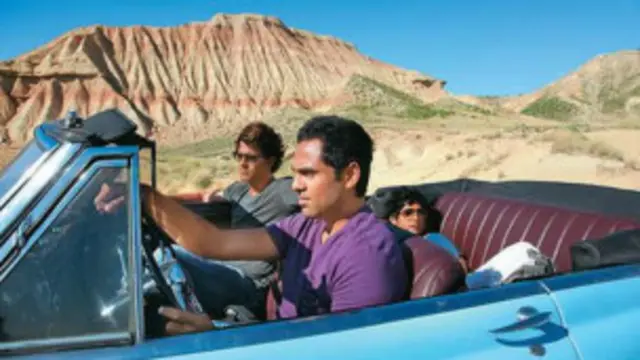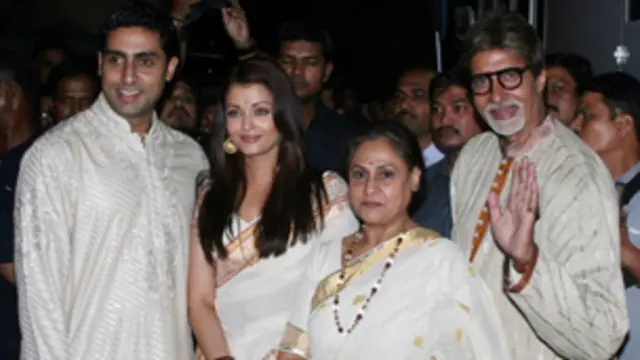Best Bollywood Classic Movies of All Time
Bollywood: A Century of Change in India

Indians love to be told stories, especially ones they have heard before.
Epic narratives, history, family sagas and romances nourish their imagination.
Folk theatre and travelling singers have been the main characters for centuries. Cinema has been important for the last 100 years.
Indian cinema is as old as cinema itself.
Six months after their debut in Paris in 1895, the Lumiere brothers arrived at the Watson Hotel in Bombay (now Mumbai) and demonstrated their new invention. And Indians took to it like fish to water.
They immediately began making one- or two-reel films.
And after years of preparation came the first feature film: Raja Harishchandra (1913), based on a well-known epic story.
Despite this, Bollywood - which refers strictly to the Hindi-language film industry and not to the other film industries in the country's other languages - has never been recognised for its virtues in India's cultural and intellectual life.
The elites who celebrate classical music, classical dance and theatre look down on Bollywood films as vulgar, common and highly unrealistic.
Cinema, in fact, has been the most vibrant medium through which India has told its own story, the story of its struggle for independence, its constant struggle to achieve national integration and emerge as a global presence.
The export of this cinema has also been successful and it is one of the few Indian products that is a recognized brand in Africa and Asia, and increasingly in Europe and the United States.
The theme of untouchability, for example, was addressed in Achhut Kanya (1936) and then in 1959 by Bimal Roy in Sujata .
Widow marriage was the theme of Ek Hi Rasta (1956), while deadly dowry harassment appeared in Dahej (1950).
These themes are coming back but in new forms as India changes. And there are other political issues.
In 1943, the film Kismet became a sensation and its best-known song was Door hato ai dinyawalon Hindustan hamara hai (Go away, people of the world, India is ours), especially at the height of the Quit India civil disobedience movement.
In 1949, newly independent India was discovering itself and its diversity.

The film Shabnam was the first multilingual film with verses in Bengali, Marathi and Tamil, signalling to the audience that everyone was part of India while lightly poking fun at the stereotypes it created.
V Shantaram, the prodigious filmmaker whose career spanned 65 years from 1921 to 1986, produced Teen Batti Chaar Raste (1953) on the theme of the need to live together despite linguistic and cultural differences, telling a story about a family where the brides speak several languages.
Director Mohan Seghal took up the same theme of antagonism between North and South Indians in his film New Delhi (1956). In one of the famous parts, the hero tells his Tamil lover in Punjabi that his father believes that if he finds a cobra and a madrasi - as all South Indians were called by North Indians - he would kill the madrasi first.
The power of love
And despite these themes, the power of love conquers them all, as well as good music and entertaining dancing.
The timid 1940s saw tragic films in which the hero and heroine's love plans are thwarted and they end up dying alone or together while singing memorable songs.
By the mid-1950s, Dilip Kumar, the prototypical early tragic hero, challenged the system in Naya Daur , where he played the role of a carriage driver fighting a new bus service.
He wins the race against the bus and joins the woman he loves in a happy ending.
This confident India is challenged by Guru Dutt's 1957 classic Pyaasa and Ramesh Saigal's 1958 film Phir Subah Hogi , which mock Nehru's India with its egalitarian pretensions and disastrous results.
By 1960, K Asif has his spectacular celebration of India in his Mughal-e-Azam epic about Akbar's reign, while Raj Kapoor with his film Jis Desh Me Ganga Behti Hai and Dilip Kumar with Ganga Jamuna explore what makes a person a "dacoit" or a bandit.
The multiple tensions in India find their niche in Bollywood, which never instructs but always entertains.
The way the British are presented also changes subtly as India develops.
In Manoj Kumar's 1981 film Kranti , the British are bloodthirsty tyrants prone to the whip and shackles while patriotic Indians fight a war against them.
Amir Khan's 2001 film Lagaan tells the story of a village that challenges the British to a cricket match over a tax dispute and prevails. It offers a picture of a confident India rethinking its colonial past.
Globalization and growing cosmopolitanism are raising anxiety about what it means to be Indian, especially for a young woman.
In this field, films such as Hum Aapke Hain Koun (1994) or Dilwale Dulhania Le Jayenge (1995) appear.
When we come to Zindagi Na Milegi Dobara (2011), we find an old story of male friendship between three men that takes place in Spain, although the protagonists are real Indians.
India has the largest film industry in the world.
It is part of India's story, telling it like no other medium does and making more money than all other sectors. Let's look forward to its second century.
Comments
Post a Comment